Assessment of Lithium Ferrous Phosphate Battery Cells Under Series Balancing Mode—Performance and Health Behaviours †
Abstract
1. Introduction
2. Experimental Setup
3. Results and Discussion
3.1. State-of-Charge Assessment
3.2. LFP Battery Charging
3.3. State-of-Health Assessment
4. Conclusions
- The state of charge is 58% for a period of 3.3 h when the current operating condition is 8 A. However, a lower current mode of 3 A, as an operating condition, resulted in an SOC of 57% after 9 h of reliable operation.
- The state of health of the LFP battery pack is consistently maintained at 92% throughout the experiment, and the temperature of the LFP battery pack is maintained at 25 °C to 31 °C.
Author Contributions
Funding
Institutional Review Board Statement
Informed Consent Statement
Data Availability Statement
Conflicts of Interest
References
- Sugumaran, G. An efficient buck-boost converter for fast active balancing of lithium-ion battery packs in electric vehicle applications. Comput. Electr. Eng. 2024, 118, 109429. [Google Scholar]
- Haraz, A.; Abualsaud, K.; Massoud, A. State-of-Health and State-of-Charge Estimation in Electric Vehicles Batteries: A Survey on Machine Learning Approaches. IEEE Access 2024, 12, 158110–158139. [Google Scholar] [CrossRef]
- Zhou, C.; Zhou, X.; Wang, Y.; Xiao, Y.; Liu, Y. Applicability assessment of equivalent circuit-thermal coupling models on LiFePO4 batteries operated under wide-temperature and high-rate pulse discharge conditions. Energy 2024, 313, 133709. [Google Scholar] [CrossRef]
- Vijaychandra, J.; Knypiński, Ł. A Comprehensive Review on Challenges and Possible Solutions of Battery Management Systems in Electric Vehicles. In Proceedings of the 2024 Progress in Applied Electrical Engineering (PAEE), Koscielisko, Poland, 24–28 June 2024; pp. 1–6. [Google Scholar]
- Dini, P.; Colicelli, A.; Saponara, S. Review on modeling and soc/soh estimation of batteries for automotive applications. Batteries 2024, 10, 34. [Google Scholar] [CrossRef]
- Liu, H.; Wei, Z.; He, W.; Zhao, J. Thermal issues about Li-ion batteries and recent progress in battery thermal management systems: A review. Energy Convers. Manag. 2017, 150, 304. [Google Scholar] [CrossRef]
- Jindal, P.; Bhattacharya, J. Review—Understanding the thermal runaway behavior of Li-ion batteries through experimental techniques. J. Electrochem. Soc. 2019, 166, A2165. [Google Scholar] [CrossRef]
- Azis, N.A.; Joelianto, E.; Widyotriatmo, A. State of charge (SoC) and state of health (SoH) estimation of lithium-ion battery using dual extended kalman filter based on polynomial battery model. In Proceedings of the 2019 6th International Conference on Instrumentation, Control, and Automation (ICA), Bandung, Indonesia, 31 July 2019; pp. 88–93. [Google Scholar]
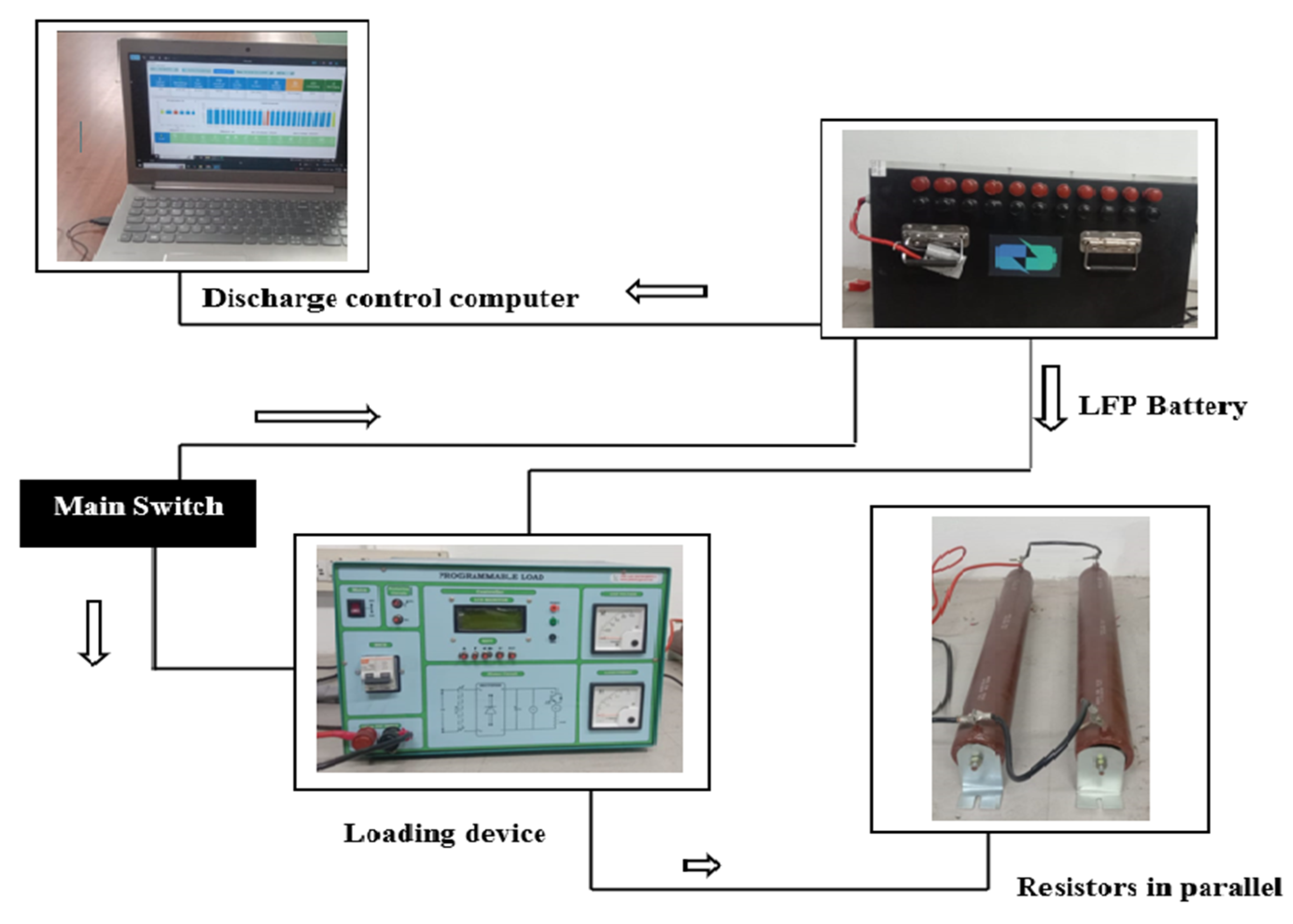
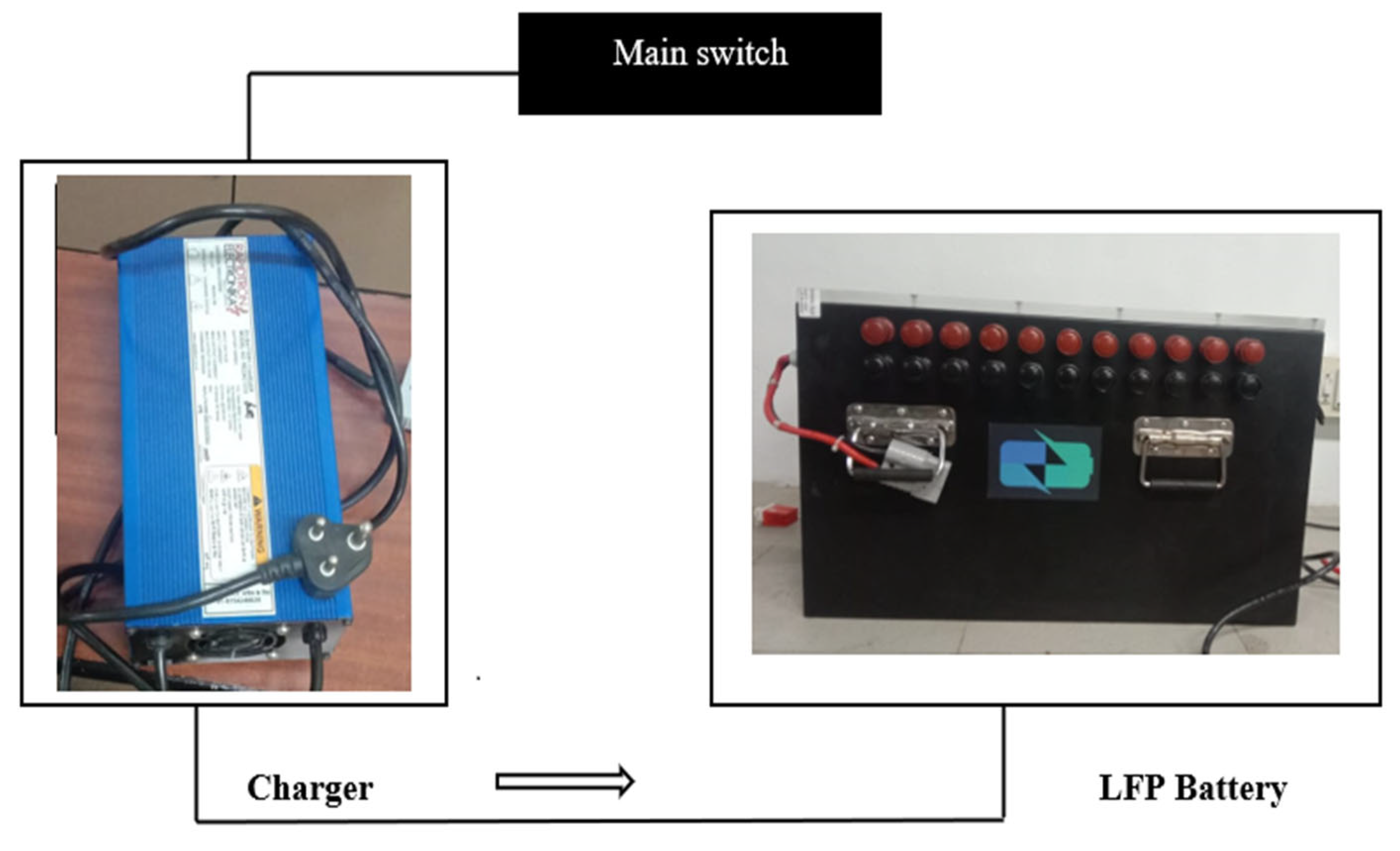
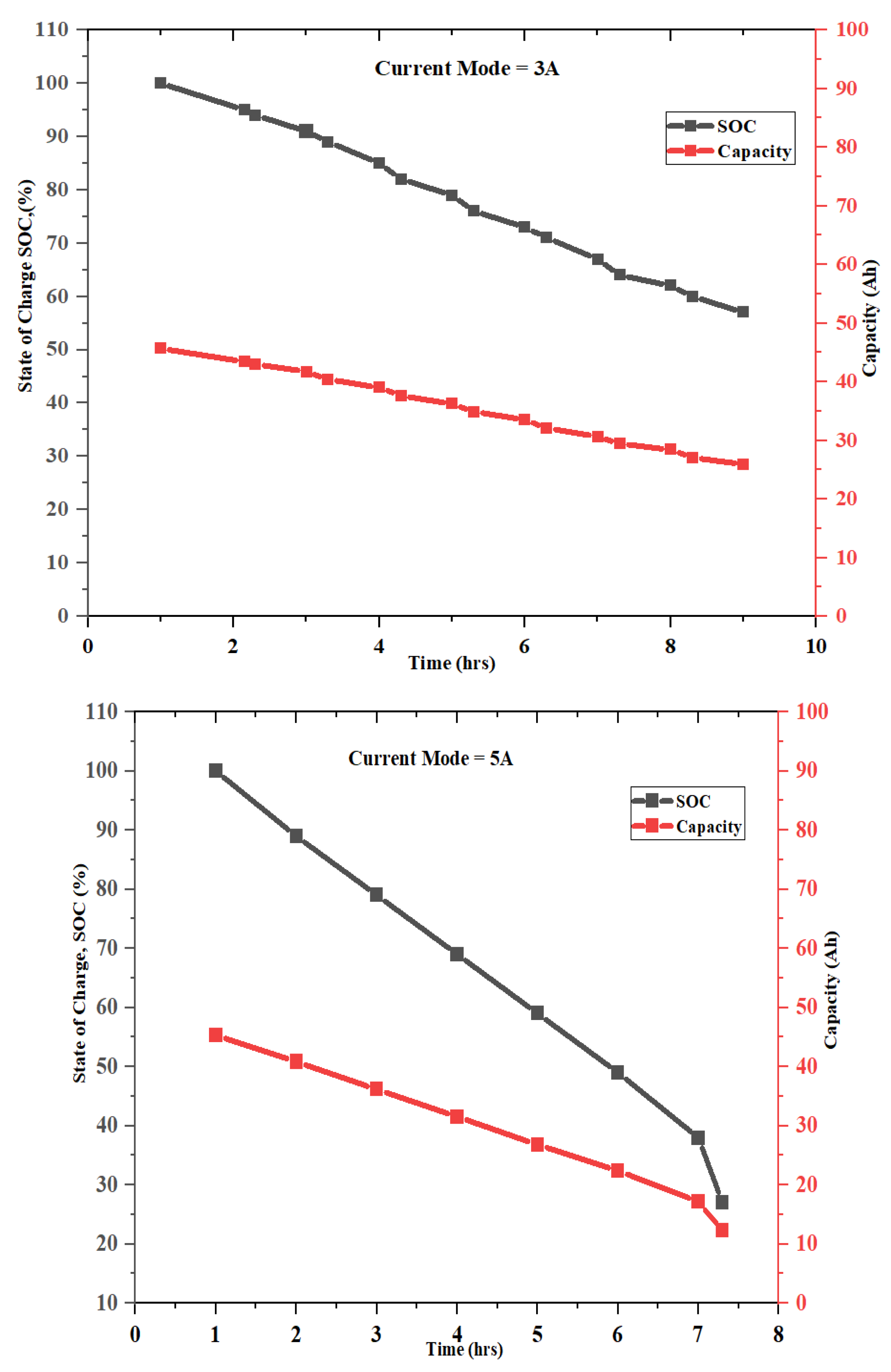
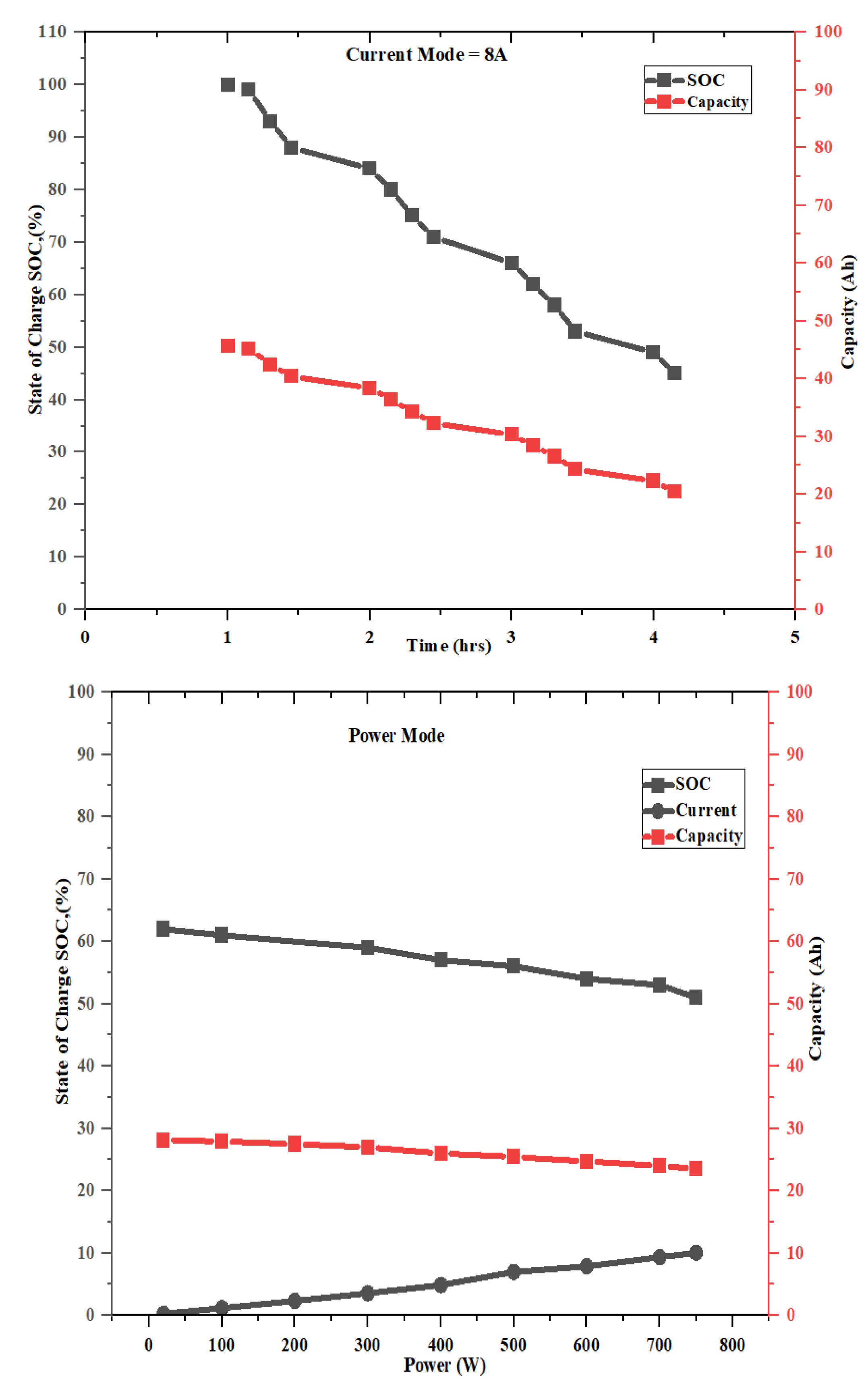
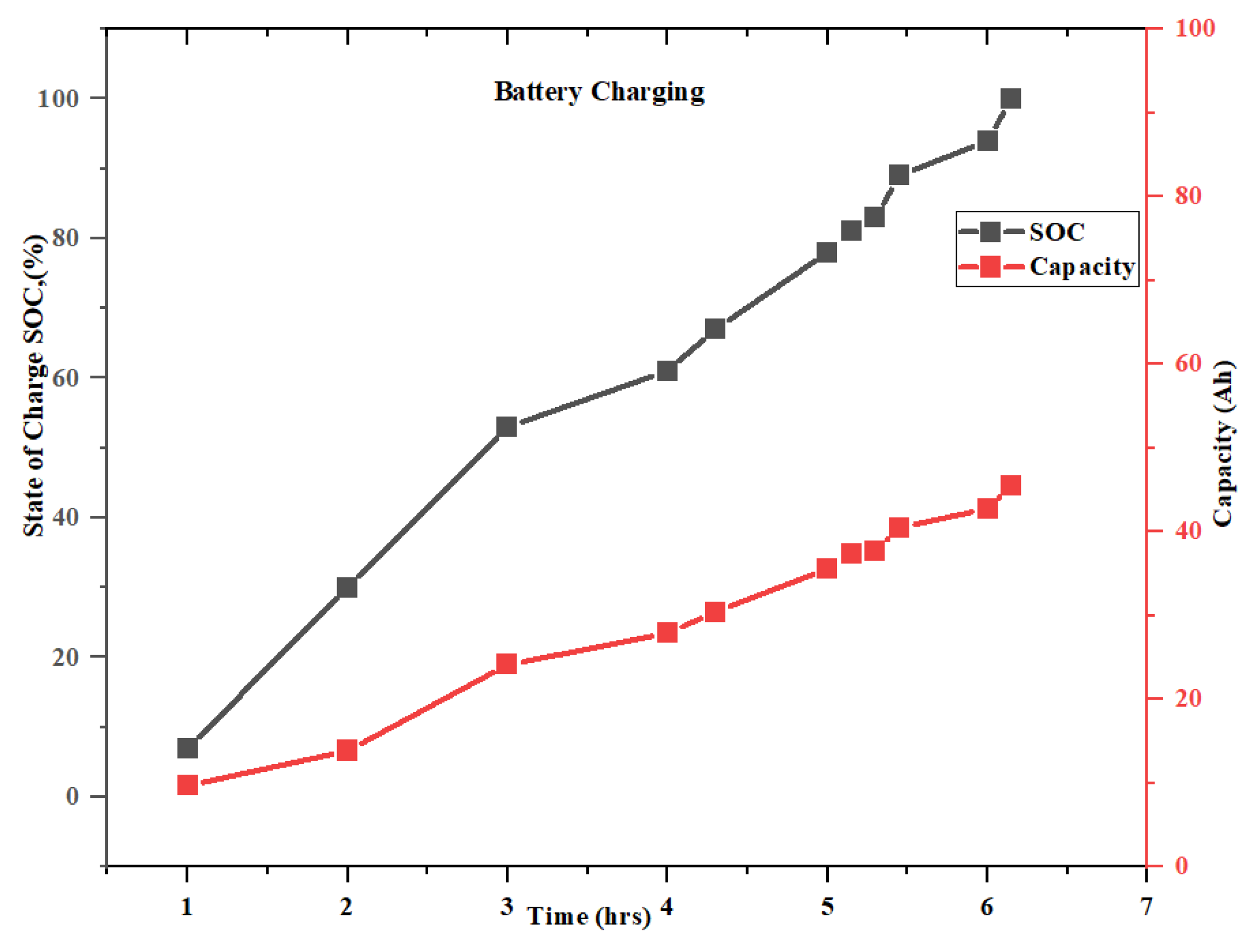
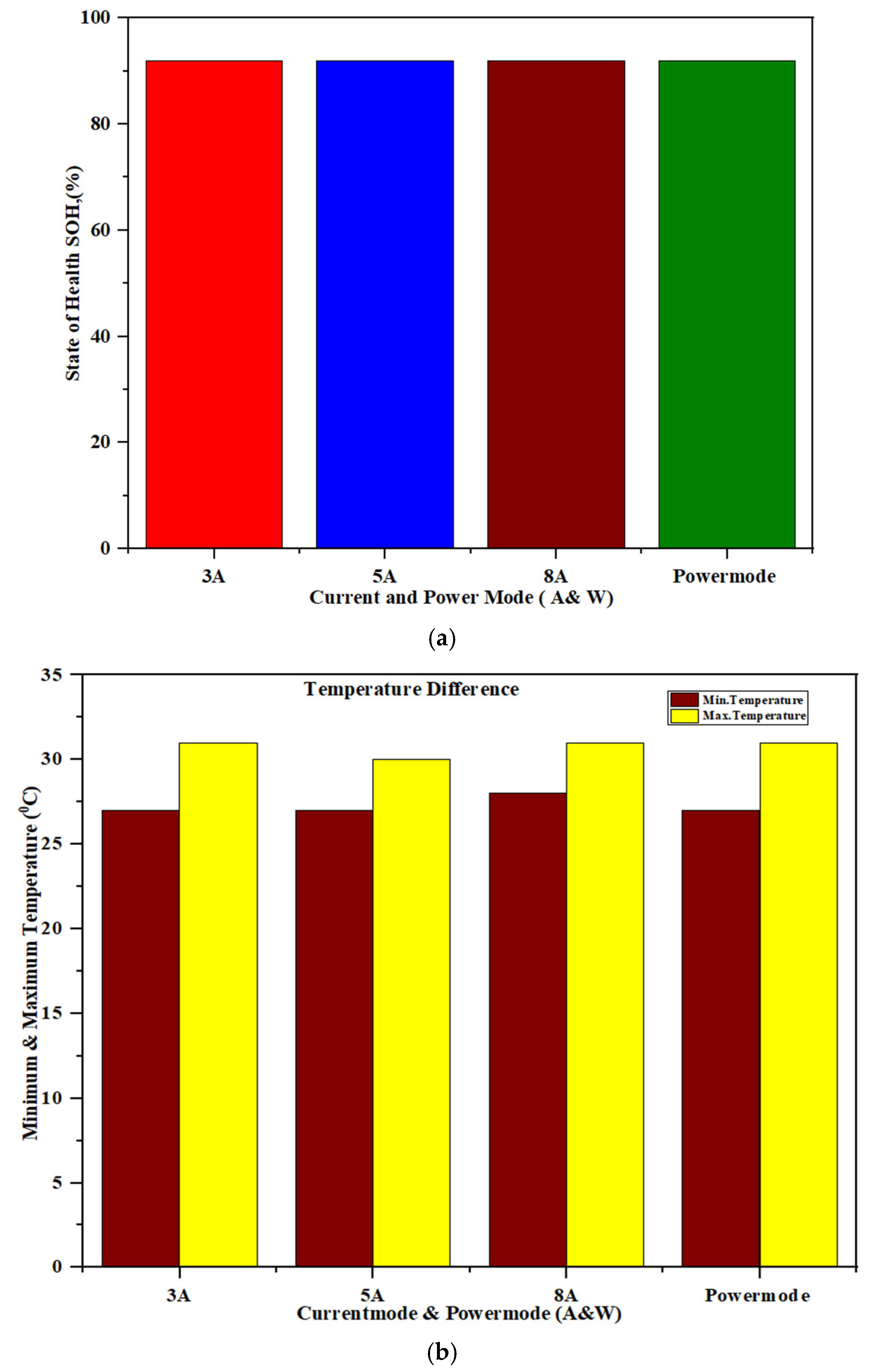
| Manufacture and Model | JSK and LFP Battery |
|---|---|
| Type | 23 cells connected in series |
| Weight of battery pack | 60 kg |
| Capacity | 100 Ah |
| Voltage | 73.5 V |
| Energy | 7360 Wh |
| Nominal voltage | 3.3 V (75.9 V) |
| Discharging end voltage | 3 V (70 V) |
| Anode and cathode material | Graphite and LFP |
| Current-mode range | 1–12 Amps (Max 10 Amps) |
| Power-mode range | 10–750 watts |
Disclaimer/Publisher’s Note: The statements, opinions and data contained in all publications are solely those of the individual author(s) and contributor(s) and not of MDPI and/or the editor(s). MDPI and/or the editor(s) disclaim responsibility for any injury to people or property resulting from any ideas, methods, instructions or products referred to in the content. |
© 2025 by the authors. Licensee MDPI, Basel, Switzerland. This article is an open access article distributed under the terms and conditions of the Creative Commons Attribution (CC BY) license (https://creativecommons.org/licenses/by/4.0/).
Share and Cite
Menon, N.B.; Mehta, S.; Punnakkattuparambil, P.; Punnakkattuparambil, P.; Marimuthu, V.; Kasianantham, N.; Wilberforce, T.; Ranjitha, J. Assessment of Lithium Ferrous Phosphate Battery Cells Under Series Balancing Mode—Performance and Health Behaviours. Eng. Proc. 2025, 95, 10. https://doi.org/10.3390/engproc2025095010
Menon NB, Mehta S, Punnakkattuparambil P, Punnakkattuparambil P, Marimuthu V, Kasianantham N, Wilberforce T, Ranjitha J. Assessment of Lithium Ferrous Phosphate Battery Cells Under Series Balancing Mode—Performance and Health Behaviours. Engineering Proceedings. 2025; 95(1):10. https://doi.org/10.3390/engproc2025095010
Chicago/Turabian StyleMenon, Niveditha Balagopal, Samridhi Mehta, Pranavya Punnakkattuparambil, Preetha Punnakkattuparambil, Vidhya Marimuthu, Nanthagopal Kasianantham, Tabbi Wilberforce, and Jambulingam Ranjitha. 2025. "Assessment of Lithium Ferrous Phosphate Battery Cells Under Series Balancing Mode—Performance and Health Behaviours" Engineering Proceedings 95, no. 1: 10. https://doi.org/10.3390/engproc2025095010
APA StyleMenon, N. B., Mehta, S., Punnakkattuparambil, P., Punnakkattuparambil, P., Marimuthu, V., Kasianantham, N., Wilberforce, T., & Ranjitha, J. (2025). Assessment of Lithium Ferrous Phosphate Battery Cells Under Series Balancing Mode—Performance and Health Behaviours. Engineering Proceedings, 95(1), 10. https://doi.org/10.3390/engproc2025095010







